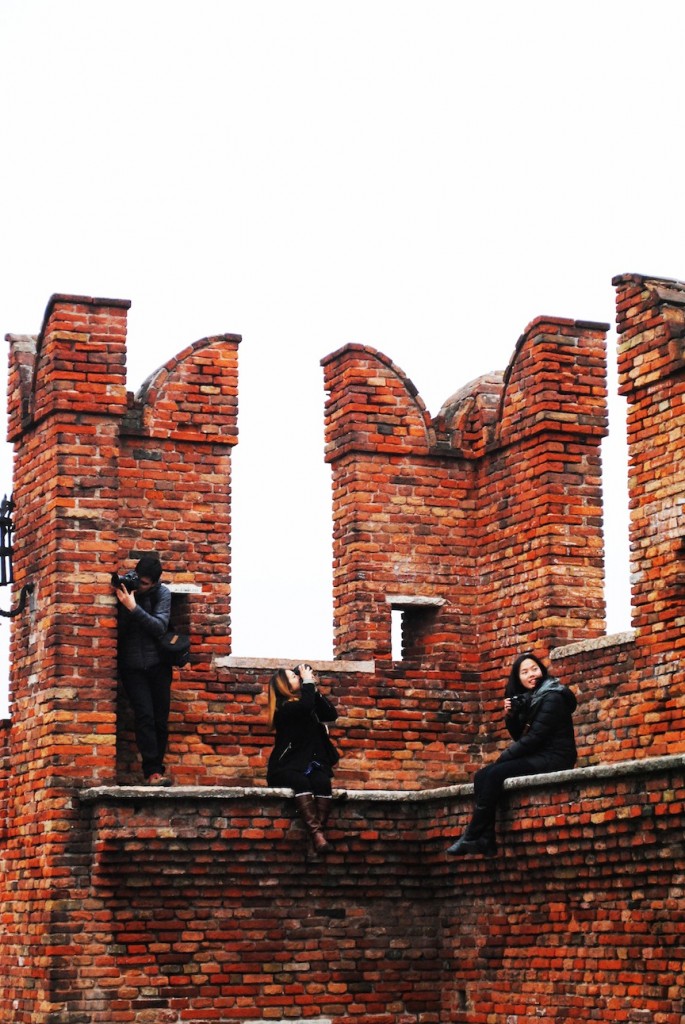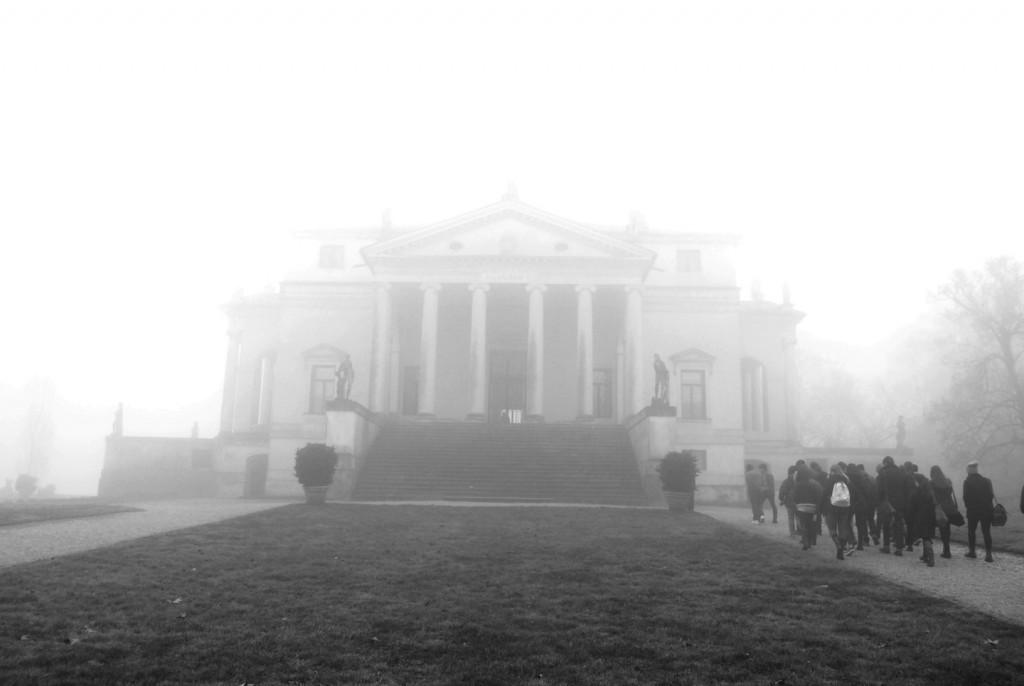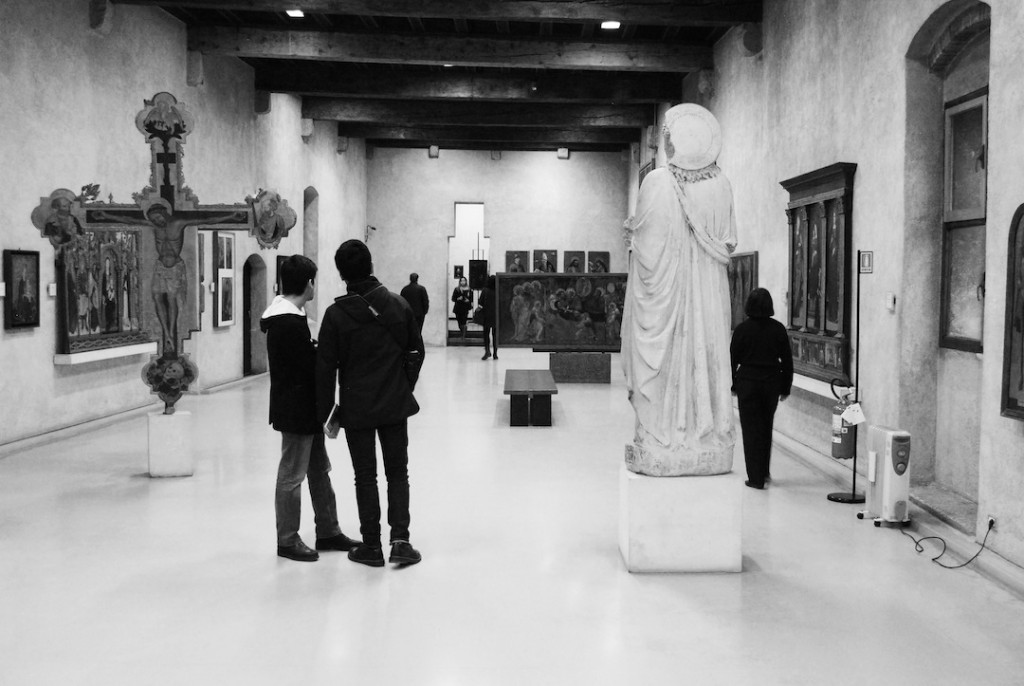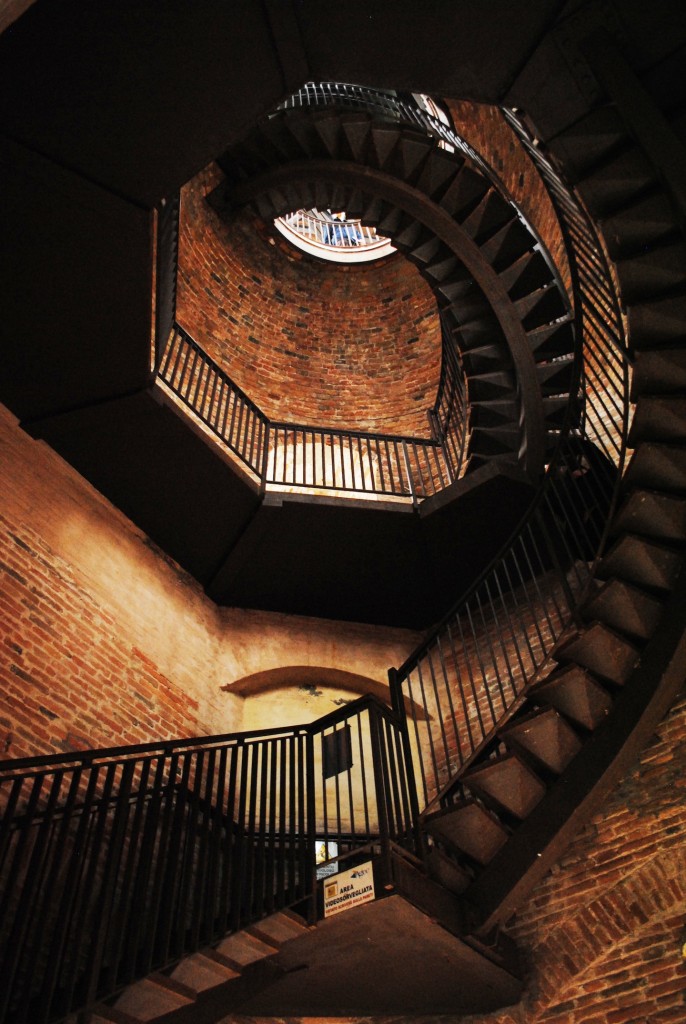

Northern Field Trip Part I
Verona | Vicenza | Padua
Hardly a week into the semester, the studio departs from Rome for the Northern field trip to Verona, Vicenza and Venice. The three hour train ride to Verona was characterized by a foggy atmosphere that lingered throughout the entire week. I didn’t mind the weather at all though. The fog heightened the mystery of the surreal places we visited. Most notably the architecture of two Italian masters: Andrea Palladio and Carlo Scarpa.
The itinerary for each day was extensive: breakfast at 7am followed by a stream of churches, museums and piazzas, a quick lunch break around noon, then more sights and places until dinner time. As one of our professors described (breathlessly as we were trying to catch up with the rest of the group)– “We’re on a whirlwind tour of Italy”! I must admit that the pace was a bit overwhelming– I prefer to linger in spaces and aimlessly wander in cities. But the density of the visual experience of seeing so many incredible Italian cities was entirely worth the blisters and sleep coma.
One of the most remarkable parts of the trip was visiting Carlo Scarpa’s intervention of the medieval Castelvecchio in Verona. The art museum displays a collection of Romanesque sculptures, paintings, weapons and ceramics. Scarpa also designed many of the display frames and easels of the art. During the last remaining daylight hours we explored this complex, marveling at the exquisite details of the hand railings and the carefully articulated metal joints of the easels. It’s actually quite amusing seeing a group of architecture students absolutely floored by such seemingly insignificant details– how many doorknobs, picture frames and light fixtures has one encountered in a lifetime? Surely a countless number. Nonetheless, Scarpa has taught me to appreciate the intricacies of craft and meticulous design.
Another memorable place we visited was Villa Rotonda, designed by Andrea Palladio. This was another foggy day that gave the experience an ethereal atmosphere. Though Cornell’s program hardly focuses on Classicism, Villa Rotonda is a place imbued with a sense of historical and architectural significance. It’s one of those precedents deeply embedded into the consciousness of every architecture student (in other words, it will MOST DEFINITELY show up on your Architecture History final exam). Visiting this place was an absolute gem. The scale was more intimate than I had initially imagined, but the frescoes and chandeliers were beautiful. There were also traces of the family that owned the villa– picture frames, blocked off rooms, piles of pillows. These small remnants made the villa less of a museum and more of a lived space. I could imagine the grand parties that were hosted here, with the guests spilling out onto the balconies towards the panoramic views.


